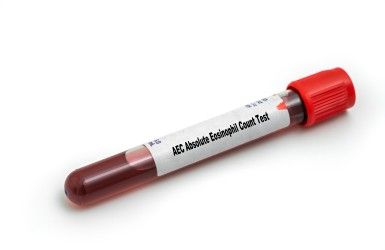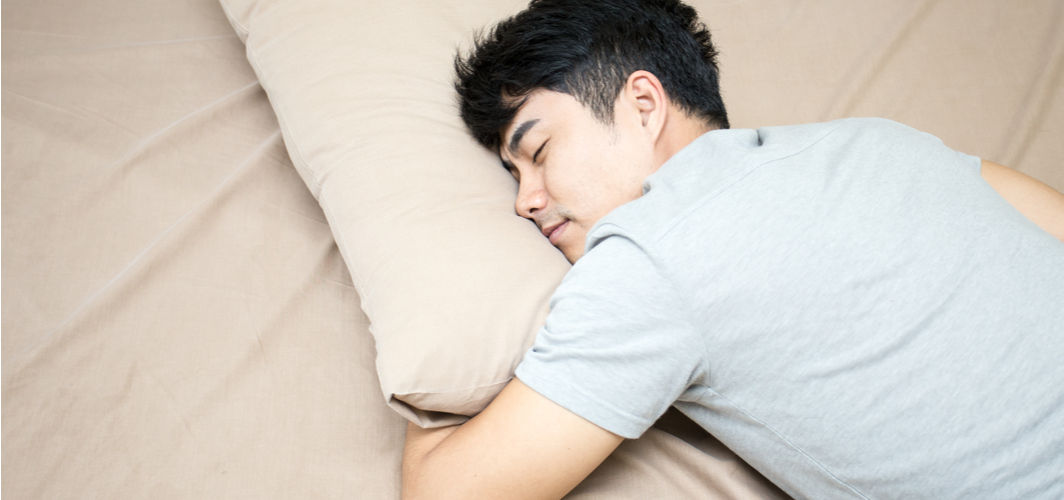General Health
Absolute Eosinophil Count – Normal Range, Purpose, Procedure, and Results Interpretation
5 min read
By Apollo 24|7, Published on - 21 May 2025
Share this article
0
0 like

The absolute eosinophil count (AEC) is a blood test used to measure the number of eosinophils, a specific type of white blood cell that plays a key role in the body’s immune response. Eosinophils help combat infections, especially those caused by parasites, and are also involved in allergic reactions and inflammation. This test is an important diagnostic tool that can help physicians identify a wide range of health conditions, from allergies and asthma to autoimmune disorders and infections. Whether you're experiencing chronic allergies, breathing issues, or unexplained symptoms, this test can provide critical insights into what’s happening inside your body.
Purpose of Absolute Eosinophil Count Test
Doctors recommend an absolute eosinophil count when they suspect:
- Allergic reactions or disorders (e.g., asthma, hay fever, eczema)
- Parasitic infections
- Autoimmune diseases
- Certain types of cancers, such as leukaemia or lymphoma
- Drug hypersensitivity reactions
- Infections, especially those involving parasites or fungi
In some cases, the test is ordered as part of a complete blood count (CBC) with differential, which measures the levels of different types of white blood cells. The AEC is particularly helpful in diagnosing eosinophilia, a condition marked by high levels of eosinophils.
How to Prepare for Absolute Eosinophil Count Test?
One of the advantages of this test is that it typically requires no special preparation. However, here are some general guidelines:
- Medications: Inform your healthcare provider about any medications, vitamins, or supplements you're taking. Some drugs (like corticosteroids or antibiotics) may affect the test results.
- Fasting: Usually not required unless your doctor advises otherwise.
- Recent Infections or Allergic Episodes: Let your provider know if you've had recent infections or allergic flare-ups, as these may temporarily influence your eosinophil levels.
Procedure for Absolute Eosinophil Count Test
The test is performed through a routine blood draw, which usually takes just a few minutes. Here’s what to expect:
- Cleaning the Area: The technician will clean a spot on your arm, typically in the bend of your elbow, using antiseptic.
- Blood Collection: A sterile needle is inserted into a vein to draw blood into a small vial or tube.
- Bandage Application: Once the sample is collected, the needle is removed, and a small bandage is applied.
- Labelling and Analysis: The blood sample is sent to a laboratory, where it's analysed for eosinophil levels.
You might feel a brief sting or pinch during the needle insertion, but overall, the test is quick and low-risk.
Absolute Eosinophil Count: Results Interpretation
The results of the absolute eosinophil count are reported as the number of eosinophils per microliter (mcL) of blood. Interpreting the results of your absolute eosinophil count requires looking beyond just the numbers. Physicians consider your symptoms, history, and other lab values to arrive at a diagnosis.
- High Eosinophil Count (Eosinophilia)
- An increased count may suggest:
- Mild eosinophilia: 500–1,500/mcL
- Moderate eosinophilia: 1,500–5,000/mcL
- Severe eosinophilia: >5,000/mcL
Possible causes include:
- Allergies (e.g., food, environmental, drug-induced)
- Asthma or chronic obstructive pulmonary disease (COPD)
- Parasitic infections
- Autoimmune disorders (e.g., vasculitis, Churg-Strauss syndrome)
- Certain cancers, especially hematologic malignancies
- Skin diseases (e.g., pemphigus, psoriasis)
- Low Eosinophil Count (Eosinopenia)
- Low eosinophil levels are often less clinically significant but may occur due to:
- Acute stress
- Cushing’s syndrome
- High-dose steroid therapy
- Severe infections
Absolute Eosinophil Count Normal Ranges
The absolute eosinophil count normal range typically falls between 30–350 eosinophils per microliter (mcL) of blood for adults, though values may vary slightly depending on laboratory methods.
- Absolute Eosinophil Count Normal Range in Females: The normal range for females is 30–350 eosinophils/mcL, with minor variations due to hormonal factors or immune responses.
- Absolute Eosinophil Count Normal Range Male: For males, the absolute eosinophil count normal range is also 30–350 eosinophils/mcL, with temporary fluctuations often linked to allergies or infections.
- Absolute Eosinophil Count Normal Range in Child: Children generally have higher eosinophil levels than adults due to their developing immune systems. The absolute eosinophil count normal range in children can extend up to 500 eosinophils/mcL.
Always consult your healthcare provider for personalised interpretation and further evaluation based on your results and overall health.
Abnormal Levels
- When to Worry About High Eosinophil Counts
- Persistent or severe eosinophilia can be a sign of:
- Eosinophilic gastrointestinal disorders
- Hypereosinophilic syndrome (HES)
- Addison's disease
Myeloproliferative neoplasms If left untreated, high eosinophil counts can lead to tissue damage, particularly in the lungs, skin, heart, and digestive tract.
Causes of Transient Elevation
Sometimes, elevated eosinophils are temporary and resolve without treatment. Triggers include:
- Seasonal allergies
- Short-term infections
- Recent vaccinations
- Low Eosinophil Counts
- Eosinopenia is usually benign and may occur during:
- Severe systemic infections
- Prolonged stress
- Hormonal imbalances (e.g., due to corticosteroid overproduction)
Managing Abnormal Absolute Eosinophil Count Results
Treatment depends on addressing the underlying cause rather than the eosinophil count itself. Management options include:
For High Counts:
- Allergy treatment: Use of antihistamines, leukotriene inhibitors, or corticosteroids.
- Asthma management: Inhalers, biologics (e.g., mepolizumab), and environmental control.
- Parasitic infections: Antiparasitic medications like albendazole or ivermectin.
- Autoimmune therapy: Immunosuppressive drugs or corticosteroids.
- Oncological treatment: If a malignancy is detected, a haematologist-oncologist may recommend chemotherapy or other targeted treatments.
For Low Counts:
No specific treatment is usually needed. If eosinopenia results from corticosteroid use or a medical condition, managing the underlying issue typically restores normal levels.
Follow-Up Testing:
Your physician may request repeat blood tests or additional diagnostics like:
- Imaging (e.g., chest X-ray, abdominal ultrasound)
- Stool tests for parasites
- Allergy panels
- Bone marrow biopsy (in rare, severe cases)
Conclusion
The absolute eosinophil count is a crucial diagnostic tool that provides valuable insights into various health conditions, ranging from mild allergies to complex immune system disorders. By understanding the absolute eosinophil count normal range—whether in men, women, or children—patients and healthcare providers can identify potential concerns early and take proactive measures to address them.
It is important to remember that abnormal eosinophil levels are not a definitive diagnosis but rather an indicator that warrants further investigation. Results must be interpreted in conjunction with your symptoms, medical history, and additional diagnostic tests. Always consult with your healthcare provider for a comprehensive evaluation and a personalised treatment approach, ensuring optimal care and better health outcomes.
General Health
Frequently Asked Questions
What is the absolute eosinophil count normal range?
What is the absolute eosinophil count normal range?
What is the absolute eosinophil count normal range in females?
What is the absolute eosinophil count normal range in females?
What is the absolute eosinophil count normal range male?
What is the absolute eosinophil count normal range male?
What is the absolute eosinophil count normal range in child?
What is the absolute eosinophil count normal range in child?
What does a high absolute eosinophil count indicate?
What does a high absolute eosinophil count indicate?
Can stress impact absolute eosinophil count levels?
Can stress impact absolute eosinophil count levels?
How does an elevated absolute eosinophil count relate to cancer?
How does an elevated absolute eosinophil count relate to cancer?
Do medications affect absolute eosinophil counts?
Do medications affect absolute eosinophil counts?
How long does it take to get results from an absolute eosinophil count test?
How long does it take to get results from an absolute eosinophil count test?
Should I be concerned about low absolute eosinophil counts?
Should I be concerned about low absolute eosinophil counts?
Leave Comment
Recommended for you

General Health
7 Common Eye Diseases, Types, Causes & Symptoms
Learn about common eye diseases, their types, causes, and symptoms. Find out how you can protect your vision and maintain good eye health.

General Health
The Role of Zinc in Promoting Better Health
Zinc is an essential nutrient that supports growth during childhood and maintains the functioning of the immune system.

General Health
Sore Throat for More Than 5 Days? Get These Tests
Sore throat lasting more than 5 days? It could be more than just a viral bug. Learn about key tests like throat culture, CBC, and CRP to find the real cause and get the right treatment.
Subscribe
Sign up for our free Health Library Daily Newsletter
Get doctor-approved health tips, news, and more.
Visual Stories

Could There Be More to Your Snore?
Tap to continue exploring
Recommended for you

General Health
7 Common Eye Diseases, Types, Causes & Symptoms
Learn about common eye diseases, their types, causes, and symptoms. Find out how you can protect your vision and maintain good eye health.

General Health
The Role of Zinc in Promoting Better Health
Zinc is an essential nutrient that supports growth during childhood and maintains the functioning of the immune system.

General Health
Sore Throat for More Than 5 Days? Get These Tests
Sore throat lasting more than 5 days? It could be more than just a viral bug. Learn about key tests like throat culture, CBC, and CRP to find the real cause and get the right treatment.